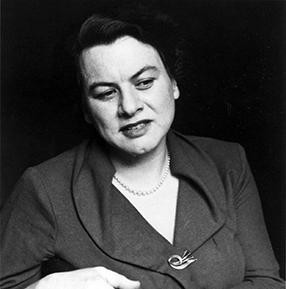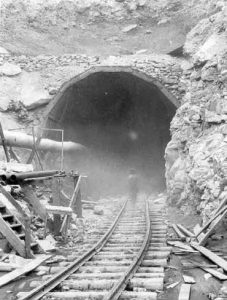By Colorado Review Editorial Assistant Leila Einhorn
It’s been two months since I arrived in Fort Collins to begin my poetry MFA at Colorado State University, and my favorite opportunity so far has been working as a TA for an environmental writing class. As a Jewish and feminist poet, I decided to teach my students about one of my superheroes: Muriel Rukeyser. I chose to focus on her 1938 masterpiece The Book of the Dead, a work considered foundational to docupoetry.
“Documentary poetry,” writes Mark Nowak, has “no founder, no contested inception, no signature spokespersons claiming its cultural capital; its practice is not limited to the pre-modern, modernist, or postmodern moments.” Loosely defined, documentary poetry is poetry that captures a historical moment through an assemblage of different media, ranging from Rukeyser’s mix of newspapers, witness testimonies, and court transcripts to more contemporary manifestations incorporating video, hyperlinks, and other new media. While the technique of docupoetry continues to be a powerful mode in poetry (consider Claudia Rankine’s wildly successful Citizen), in Rukeyser’s time, such innovations were considered revolutionary.
The Book of the Dead documents the Hawk’s Nest Tunnel disaster, an outbreak of occupational silicosis caused by the construction of a tunnel in West Virginia in the thirties. Hundreds of (mostly black) workers were killed. Union Carbide, the corporation funding the project, refused to provide safety equipment for its laborers, despite knowing the fatal dangers of silica. In The Book of the Dead, Rukeyser transports the reader to the small town of Gauley Bridge, West Virginia to experience the tragedy and its aftermath firsthand. Using trial transcripts, witness testimonies, interviews, medical descriptions, and more, Rukeyser documents a nonlinear account of the industrial disaster through voices both real and imagined. Throughout, she never loses sight of the potential problematics of documentary poetry (voyeurism, appropriation, etc.) and this inquiry into her own method is an integral part of the poem. The Book of the Dead, which totals to an impressive thirty pages, is one of the greatest long poems of the twentieth century, yet it remains largely unknown.
I’ll be accompanying my class discussion of Rukeyser with an exploration of contemporary poet Jonah Mixon-Webster’s “Based on Actual Events / The Real Nigga Attempts to Survive the Apocalypse,” the writer’s account of the water crisis in his native Flint, Michigan. Both Rukeyser’s and Mixon-Webster’s poems serve as powerful documentation of some of the worst environmental injustices in American history. As we continue to navigate our changed environment, we must seek out such writers for guidance on how to reckon with the storm.

